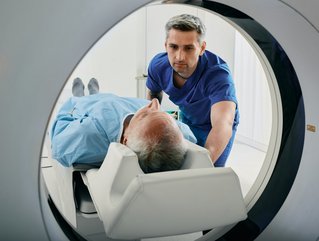TÜV SÜD: Medical device manufacturers & safety protocols

Medical device manufacturers must reassess their role in securing patient safety with respect to risks associated with magnetic resonance imaging (MRI). Primarily, they should remain vigilant toward the possibility that implants, devices, and worn medical accoutrements might become defective or harmful in MRI environments. Manufacturers can use MRI safety tests to help protect themselves as well as patients and build confident client communities.
MRI technology has been a lifesaver. After decades of experimentation, testing, and research, magnetic scanning devices emerged in the late 1970s as the premier medical tool used in diagnosing and treating various diseases, medical conditions, and otherwise imperceptible maladies in the human body. As healthcare professionals could perceive the earliest stages of cancer, MRIs gave patients better opportunities to avoid severe illness or complications. Treatments became both more precise and more effective. In addition an MRI is non-invasive and painless, and, unlike x-rays and CT scans, there is no risk of radiation exposure.
While MRI technology is basically harmless, it can become a problem when interacting with magnetically sensitive objects. Both patients and personnel can be injured. Radio frequency (RF) energy can generate heat in keys, jewellery, knee braces, or prostheses and cause thermal injury. The electromagnetic fields of the MRI can also negatively interfere with the function of medical devices. Active, life-saving devices, such as pacemakers, stents, and middle ear implants, can stop working, and non-active, metal, medical implants can be compromised, leading to injury.
Medical device manufacturers, therefore, have an obligation to run thorough risk assessments of their products with respect to MRI technology. Evaluation and testing are necessary procedures for manufacturers to ensure the safe use of their implants and protect patients from unknown risks. As the so-called MRI safety testing also provides recommendations on safety and usability in the context of MRI diagnostics, it is also important for the labelling of products before entering the market.
TÜV SÜD has the capability to generate electromagnetic conditions at its testing facility in New Brighton, MN. Implants and other medical devices are tested here.
Regulations for manufacturers of implantable medical devices
Around the world, the potential risks to patients who undergo magnetic resonance (MR) scanning are actively being assessed by centralised authorities. Regulators, like the U.S. Food and Drug Administration (FDA) have put in place mandates that require device manufacturers to prepare a premarket review for new, upgraded, or remodelled medical devices before they can be sold. As new devices are introduced to the market, regulators adjust safety assessments according to how new devices react in MRI environments. The document that establishes the rules for selling and marketing devices in the EU is known as the Medical Device Regulation (EU 2017/745, also called the MDR); the FDA in the U.S. published something similar in 2021 called “Testing and Labelling of Medical Devices for Safety in the Magnetic Resonance (MR) Environment” (Docket Number FDA-2019-D-2837). Such documentation from centralised authorising agencies provides critical infrastructure to protect both device manufacturers and the clients whose lives depend on the safety of the devices when exposed to MRI environments.
Labelling as a safety measure
Frameworks have been put in place to help secure patient safety, from testing to labelling. Standards set by ASTM International – the globally operating organisation that develops and publishes standards that materials, products, systems, and services should adopt to ensure safe use – add a layer of security for both patients and physicians. The United States currently sets the bar for having a coherent set of consensus standards, adopted by the FDA. They are based on tests that measure magnetically induced displacement force (ASTM F2052) and torque (ASTM F2213); radio frequency (ASTM F2182); image distortion and signal loss (ASTM F2119); and labelling or marking (ASTM F2503).
Implantable medical devices are marked according to results from the testing standards laid out in the ASTM field. They fall into one of three categories: MR Safe, MR Unsafe, and MR Conditional, and are made visibly legible through “MR” initials embedded into universally recognized shapes and colours: green for safe, red for unsafe and yellow for conditional.
When devices are tested and magnetic, conductive, or metallic materials are found, and they are known to pose a threat in MRI environments or not shown to be safe, they are labelled “MR-unsafe“; when hazardous materials are found and deemed safe in specific MRI condition, they are labelled “MR-conditional“. Devices labelled MR Conditional may require further testing. “MR-unsafe“ is the default category applied to all implantable medical devices. This ensures that all products are tested for hazardous materials. The MDR is encouraged to follow the FDA in implementing thorough and comprehensive safety standards. Devices without any magnetic, conductive or metallic material or those that can be shown to pose no risk in any condition can be labelled “MR-safe”.
Safety compliance and reliable partners
Addressing the risk factors of taking implantable devices into an MRI environment is an ongoing operation. Despite regulations and testing, unexpected circumstances can put the safety framework in flux. Medical devices may break down, new materials or methods of treatment, and developments in MR technology may contravene existing labelling. The likelihood of preempting unforeseen problems is best managed by building reliable partnerships.
Within the EU, TÜV SÜD is the leading Notified Bodies inspection organisation, and it possesses the latest regulatory standards available for testing implantable medical devices. It has IMDRF’s Medical Device Single Audit Program (MDSAP) accreditation, which means that devices that pass inspection through TÜV SÜD will have demonstrated compliance with the legal standards in the countries where they currently operate: U.S., Canada, Japan, Brazil and Australia, in addition to EU and UK as official observers.
Apart from offering state-of-the-art laboratories, skilled professionals, and membership in the CB scheme, TÜV SÜD is part of a global network of engineers, medical doctors, and mechanical engineers through which it can keep ahead of the curve. The TÜV SÜD in New Brighton, Minneapolis, has a special facility devoted to new medical device testing. This unit has ISO/IEC 17025:2017 accreditation by the American Association for Laboratory Accreditation and has the capacity to test MRI safety according to the relevant consensus standards of the ASTM (ASTM F2052, ASTM F2213, ASTM F2182, and ASTM F2119). Their facility in Minneapolis is capable of testing new implantable medical devices and readying them for approval.
By Mahdi Abbasi, TÜV SÜD Product Service






